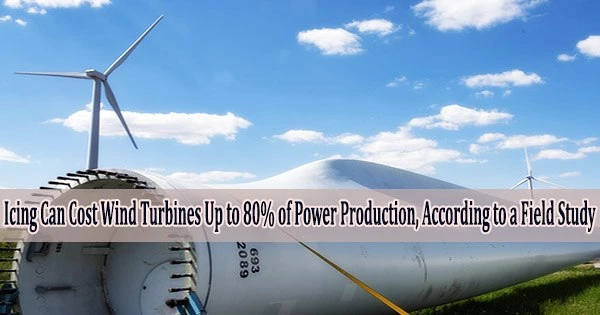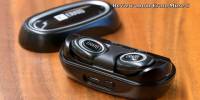On the yard-wide tips of wind turbine blades whirling through chilly, wet weather, ice can build up nearly a foot thick.
Aerodynamics of the blades are disturbed. That throws off the turbine’s overall balance. And that can disrupt energy production by up to 80 percent, according to a recently published field study led by Hui Hu, Iowa State University’s Martin C. Jischke Professor in Aerospace Engineering and director of the university’s Aircraft Icing Physics and Anti-/De-icing Technology Laboratory.
For about 10 years, Hu has conducted laboratory investigations of turbine-blade ice, conducting trials in the distinctive ISU Icing Research Tunnel. Grants from the National Science Foundation and the Iowa Energy Center have helped to fund a large portion of that effort.
“But we always have questions about whether what we do in the lab represents what happens in the field,” Hu said. “What happens over the blade surfaces of large, utility-scale wind turbines?”
One recent development in the subject is something that we are all aware of. Texas experienced a winter storm last month that caused wind power and other energy sources to freeze and malfunction.
Despite the high wind, iced wind turbines were found to rotate much slower and even shut down frequently during the icing event, with the icing-induced power loss being up to 80%.
Searching for a field site
Hu started planning a field research several years ago in order to quantify what occurs on wind farms during cold weather. But that was more complicated than he expected. Even in Iowa, where some 5,100 wind turbines produce more than 40% of the state’s electricity (according to the U.S. Energy Information Association), he wasn’t given access to turbines. Energy companies usually don’t want their turbine performance data to go public.
Hu then inquired as to whether Chinese wind farms would assist after establishing contacts with academics at the School of Renewable Energy at North China Electric Power University in Beijing through the National Science Foundation-funded International Research Experiences for Students program.
In January 2019, the owners of a 50 megawatt, 34 turbine wind farm on an eastern Chinese mountain crest decided to conduct a field investigation. According to Hu, the majority of the turbines produce 1.5 megawatts of electricity and are quite comparable to utility-scale turbines used in the US.
Hu claimed that because of its proximity to the East China Sea, the wind farm that the researchers analyzed has icing conditions more akin to those in Texas than Iowa. When winter cold descends in Texas, wind farms there are exposed to greater moisture due to the adjacent Gulf of Mexico; wind farms in Iowa are exposed to colder, drier winter temperatures.
Measuring the ice
The researchers utilized drones to photograph 50-meter-long turbine blades that had been exposed to severe winter weather conditions, such as freezing rain, freezing drizzle, wet snow, and freezing fog, for up to 30 hours as part of their fieldwork.
The images made it possible to monitor and analyze in great detail how and where the ice formed on the turbine blades. Hu claimed that the images helped researchers compare the two types of icing and that they mostly confirmed their experimental findings, theories, and hypotheses.
The photos showed, “While ice accreted over entire blade spans, more ice was found to accrete on outboard blades with the ice thickness reaching up to 0.3 meters (nearly 1 foot) near the blade tips,” the researchers wrote in a paper recently published online by the journal Renewable Energy.
The operation status and power output under ice-covered blade conditions were compared to more normal, ice-free situations using the turbines’ built-in control and data-acquisition systems.
“That tells us what’s the big deal, what’s the effect on power production,” Hu said.
The researchers found that icing had a major effect:
“Despite the high wind, iced wind turbines were found to rotate much slower and even shut down frequently during the icing event, with the icing-induced power loss being up to 80%,” the researchers wrote.
As a result, Hu will keep working on a different area of wind turbine research in an effort to identify efficient ways to de-ice the blades so they can continue to spin and the electricity can continue to flow throughout the winter.
















